Birgit Werres is Transforming Worn Down Industrial Objects Into Art
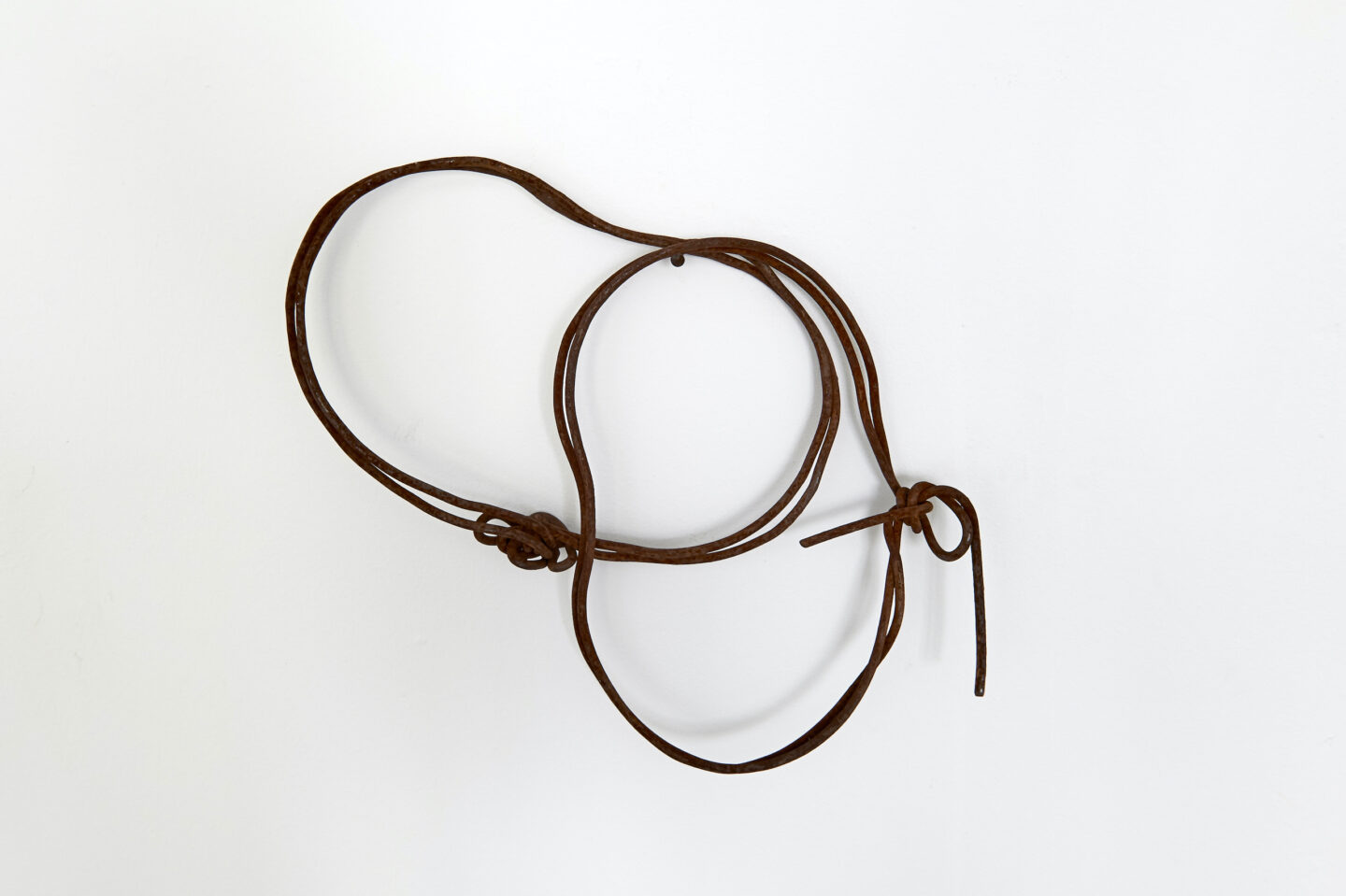

Words: Chris Erik Thomas.
The gradual disintegration of manmade objects can be just as captivating as the etchings of seaside cliffs worn down by the spray of the sea. For decades, the Stommeln-born artist Birgit Werres has turned her keen eye towards the rusted patina that settles on steel and the discarded scraps of plastic that lie disused on factory floors. It’s here, amongst the leftovers or forgotten about industrial objects that litter the world, that she has created magic. Transforming junkyard debris into art that has been shown across Germany and beyond.
Long before recycling and the reuse of material became en vogue within not just the art world, but across industries of all types, Werres was giving new life to objects she sourced from her trips to factories and material depots around the world. With even the most seemingly mundane piece of pipe or chain or film or packaging, she has sculpted dazzling works that burst with color and energy.
Back in April, Galerie Anke Schmidt’s booth at Art Düsseldorf played host to some of Werres’ sculptures, introducing the artist to new art lovers and reintroducing her to established collectors. This summer, the artist has two exhibitions on view at Kunstmuseum Bonn and Kunstmuseum St. Gallen, and we have two unforgettable works by Werres now available in our Online Shop: “Untitled 36/21” and “Untitled 7/22”. We caught up with the artist to learn more about her artistic process, the impact of recycling on her work, and the story behind her first sculpture.
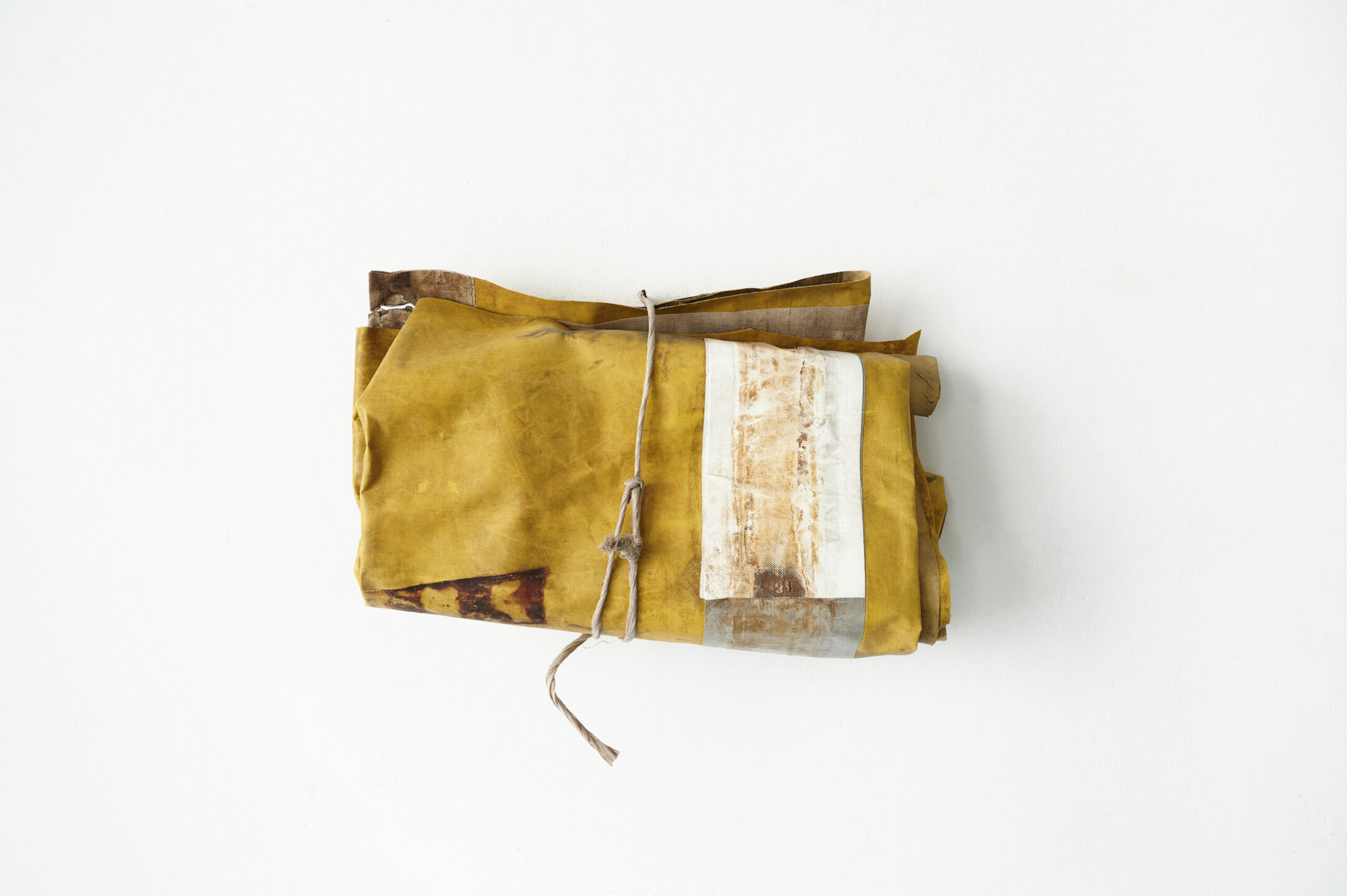
Birgit Werres. "Untitled # 6/21", 2021. Plastic. 37x62 x19cm. Courtesy of Galerie Anke Schmidt.
Much of your work revolves around how technical objects change over time. How did this interest begin?
During my studies, I was already interested in the surface texture and associated colorfulness of a wide variety of materials. The respective origin or purpose plays no role, but the appearance does. This was (and still is) often precisely the change to the material — by wear or weather conditions, for example.
Around 1986, I went again and again to the site of a disused freight station in Duisburg. There was a lot to discover there; this was the beginning of finding such places to inspire my work.
How did the COVID-19 pandemic shift or alter your artistic practice?
I focused on concentrated work in the studio. Using what is there. Instead of going to other places, I searched through my stock of materials, rediscovered them, and reused some of them with a different perspective.
At the same time, I remembered materials I discovered at fairs — fairs for plastics or metal, for example — and tried to find them on the internet. Of course, online shopping was tedious but, against all expectations, it was also a place for discoveries.
Prospective art collectors can find two of your works, “Untitled 36/21” and “Untitled 7/22”, on our Online Shop. What is the background behind each of these works? What inspired them and how were they made?
“Untitled # 36/21” is a plastic material that had been stored in my studio for many, many years. I was interested in the deformations and the extreme color. Over the years I have brought it out again and again and tried different ways of handling it. Until last year, when I very spontaneously pierced it and impaled it. I was immediately convinced by the attachment to the wall, the projecting into the room.
“Untitled # 7/22” is copper-plated sheet metal, fresh from production. Here I was particularly interested in the indentations and protrusions that were created during my working process in the studio. Through an unwinding – and rewinding has finally resulted in the form of the two roles.
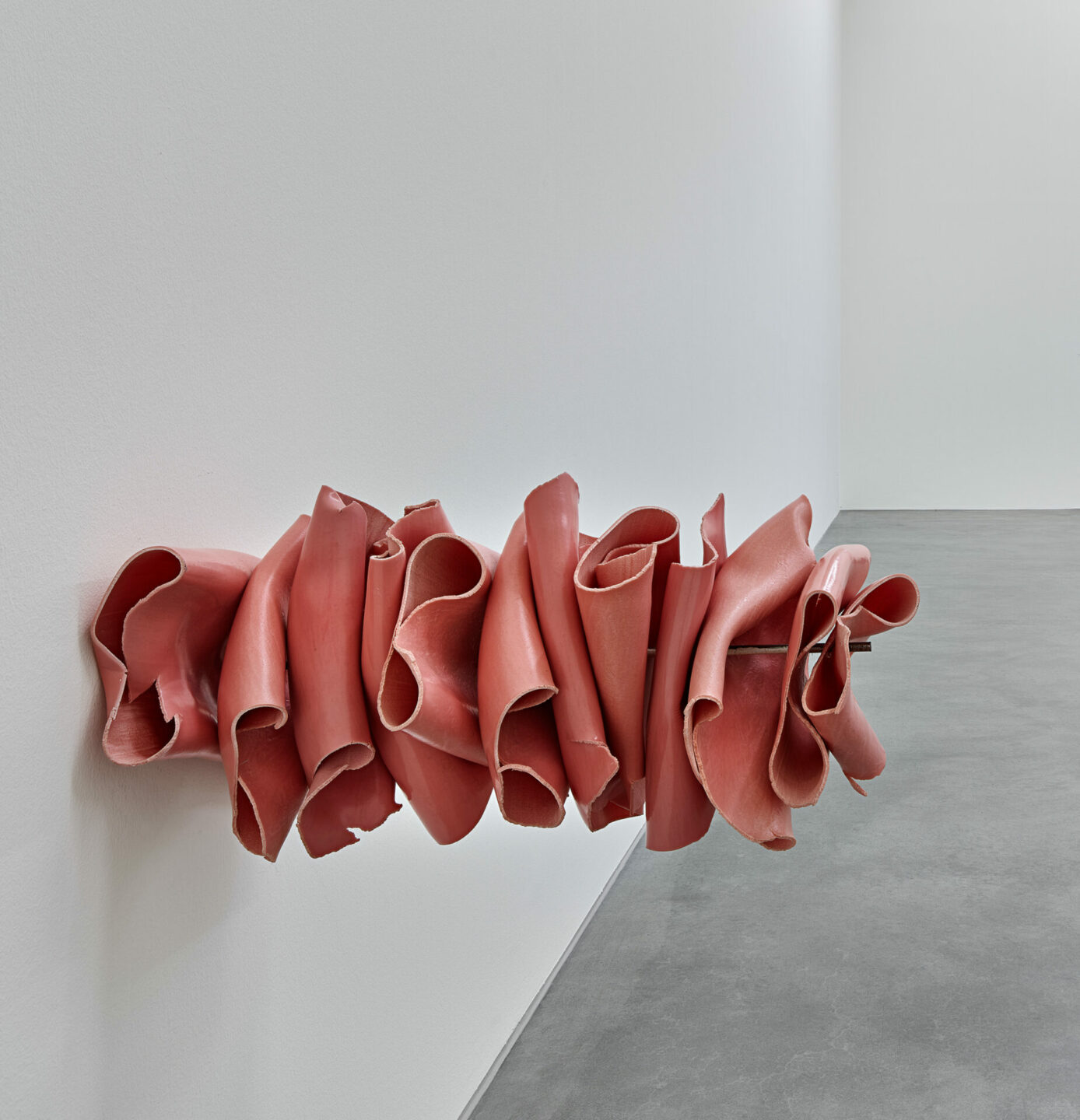
Birgit Werres. "Untitled #36/21", 2021. Plastic and metal. 28x28x48cm. Courtesy of Galerie Anke Schmidt.
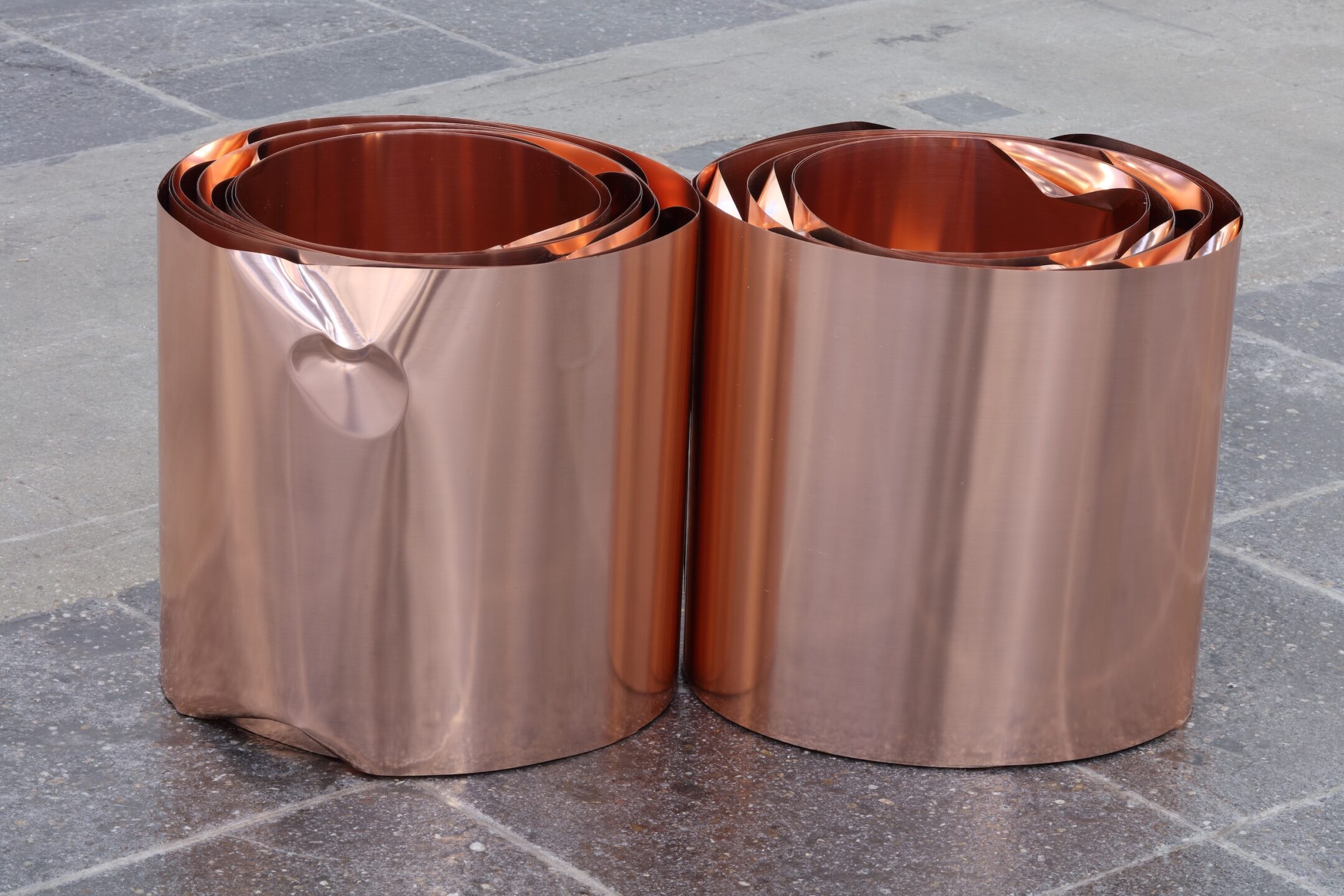
Birgit Werres. "Untitled #7/22", 2022. Metal. 38x78x38cm. Courtesy of Galerie Anke Schmidt.
You’ve worked with various materials, including chains, pipes, plastic, package film, and more. Are there any materials you prefer more than others? If so, what is it about these specific materials that inspire you?
No, there are no preferred materials. The desire to discover new things prevails.
Do you remember the first sculpture you ever created? If so, please talk about it.
I created my first sculpture in collaboration with Heinz Breloh. He had a guest professorship at the Kunstakademie Düsseldorf at the beginning of my studies and provided a room and plaster for experimental work.
We students brought in different materials, including oversized, roughly splintered pieces of wood, which I used in conjunction with plaster. I developed a sculpture out of sheer action corresponding to my body dimensions.
You live and work in Dusseldorf, a city where art is granted a lot of importance and respect. How does the city inspire your creativity?
The remains of the harbor and the exchange with the artists living here inspire me.
You were born in the village of Stommeln. In your childhood, did you have any interaction with art? What led you to become an artist?
No. Initially, I saw all my interests bundled in the field of stage design. Studying at the Academy of Arts and discovering sculpture then changed my direction.
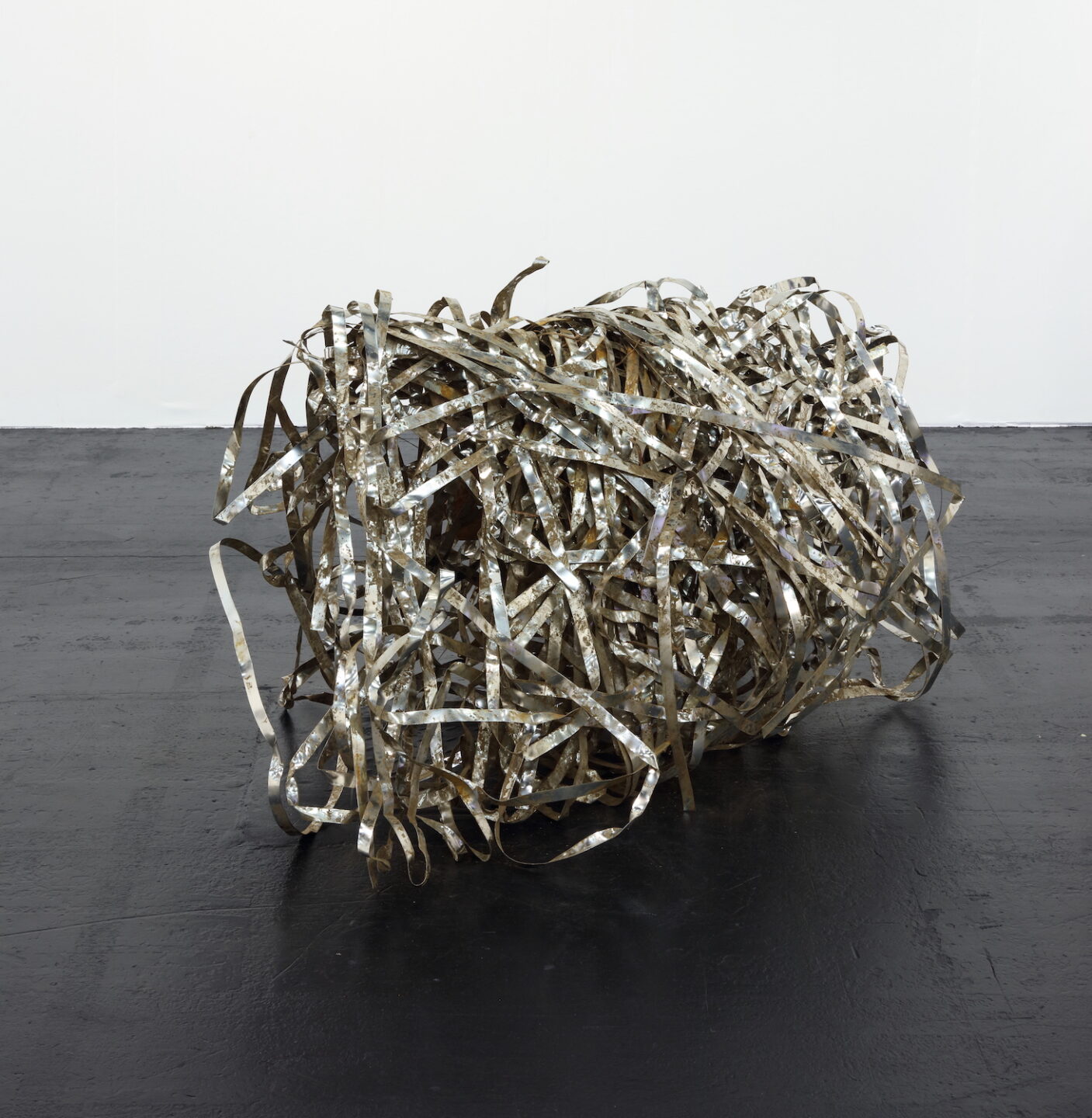
Birgit Werres. "Untitled #21/21", 2021. Metal. 36x112x50cm. Courtesy of Galerie Anke Schmidt.
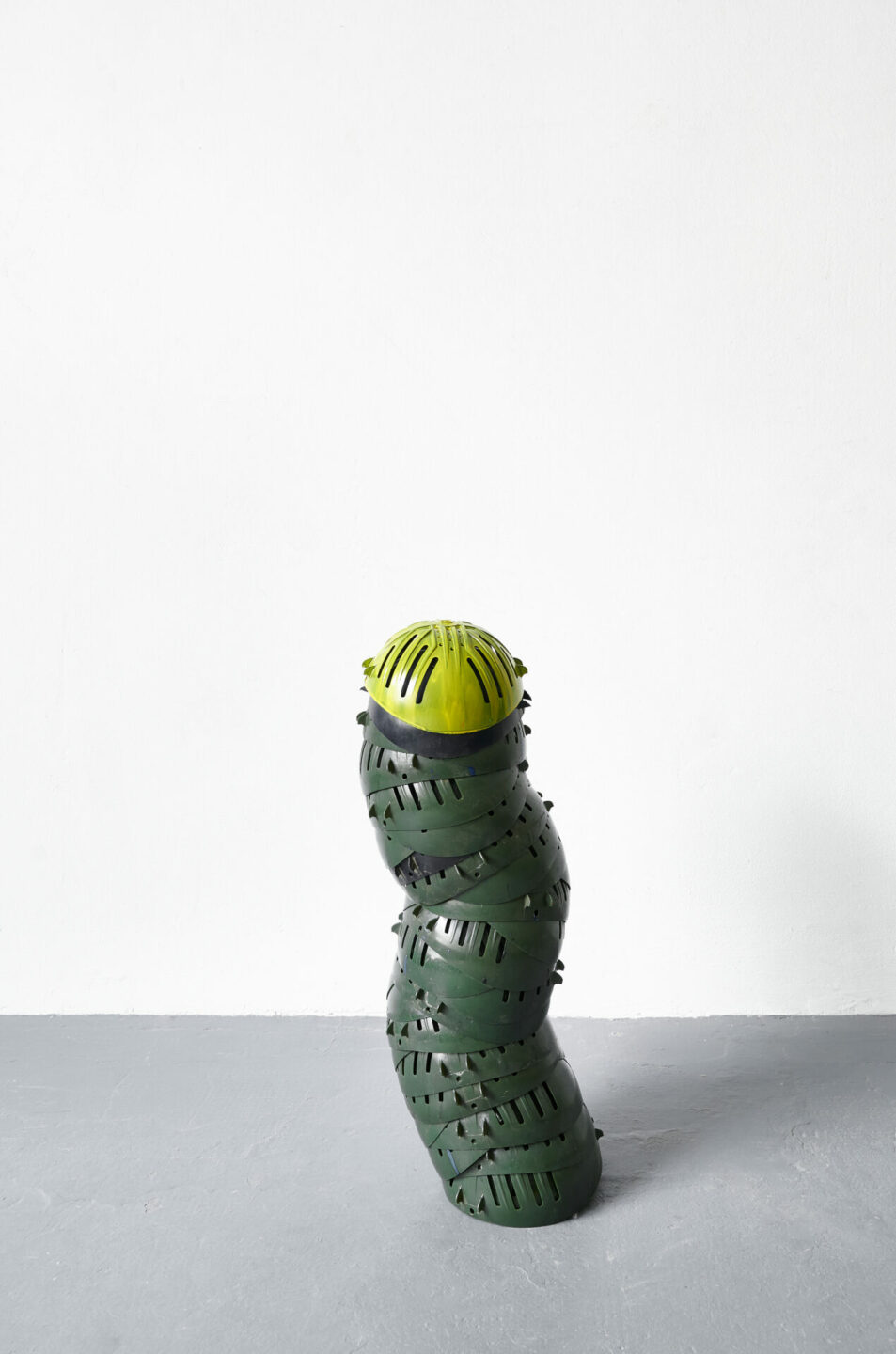
Birgit Werres. "Untitled #3/21", 2021. Plastic lacquer. 56x21x18cm. Courtesy of Galerie Anke Schmidt.
You have works included in the Kunst Museum Bonn’s new exhibition, “Space For Imaginative Actions”. What are the works and what inspired them?
In this new presentation of its collection, the Kunstmuseum shows a work from 1999. It is a black and white plastic material that I have wound in a circle. It is three meters in diameter and 30 cm high. It was the first newly produced material from which I developed a sculpture.
You were recently featured in the booth of Galerie Anke Schmidt at Art Düsseldorf. How did you first get involved with the gallery? How has your relationship evolved since then?
Iris Maczollek and Anke Schmidt took over the gallery from my previous gallerist, Rolf Ricke, in 2005 and continued to work with some artists, as well as with me. Since 2014, Anke Schmidt has continued to run the gallery independently. An extremely fruitful relationship has developed, from which numerous exhibitions and projects have evolved. I appreciate the regular exchange about my work in the studio and other artistic positions and joint exhibition visits.
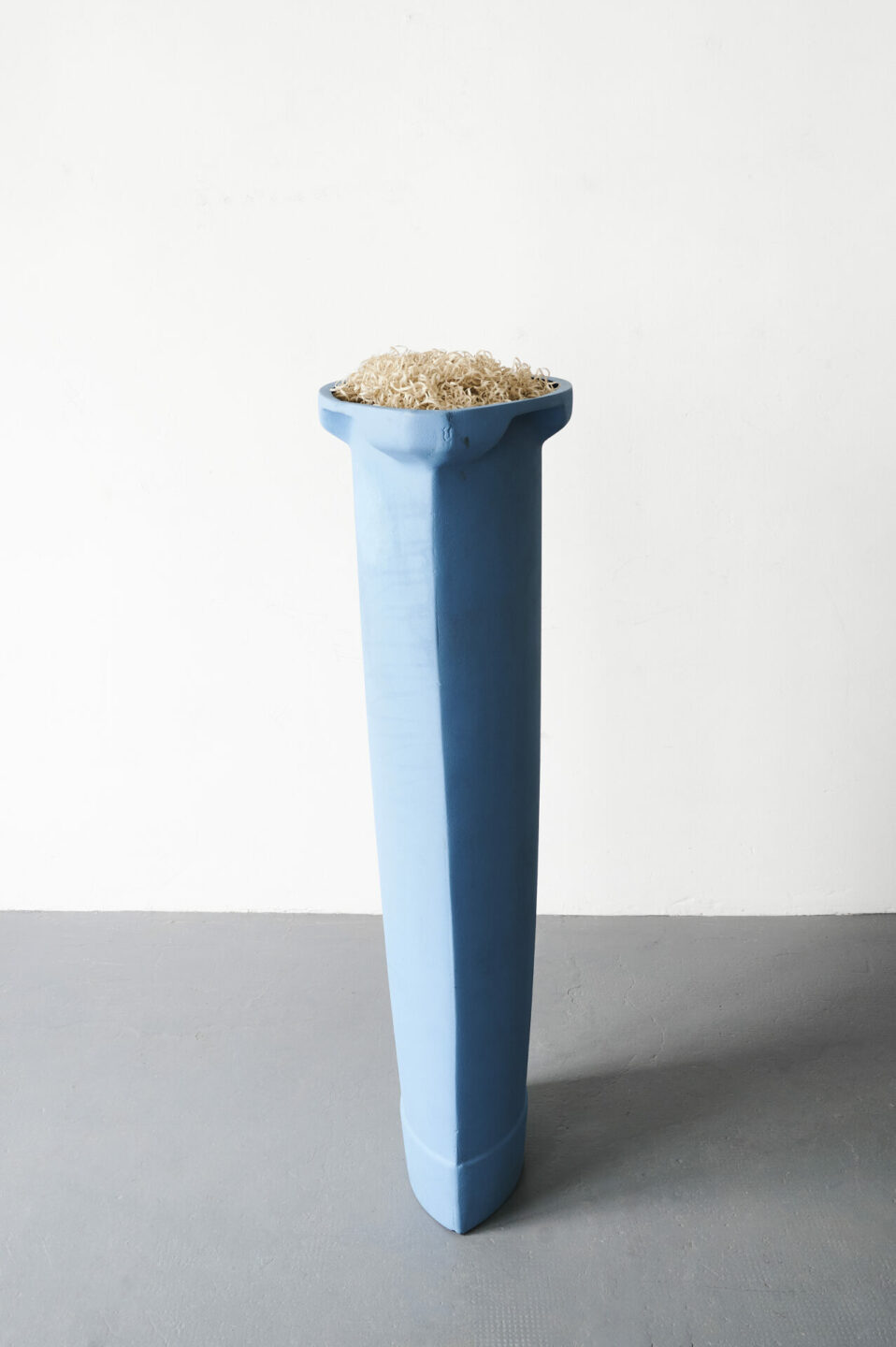
Birgit Werres. "Untitled #8/21", 2021. Plastic. 116x50x32cm. Courtesy of Galerie Anke Schmidt.
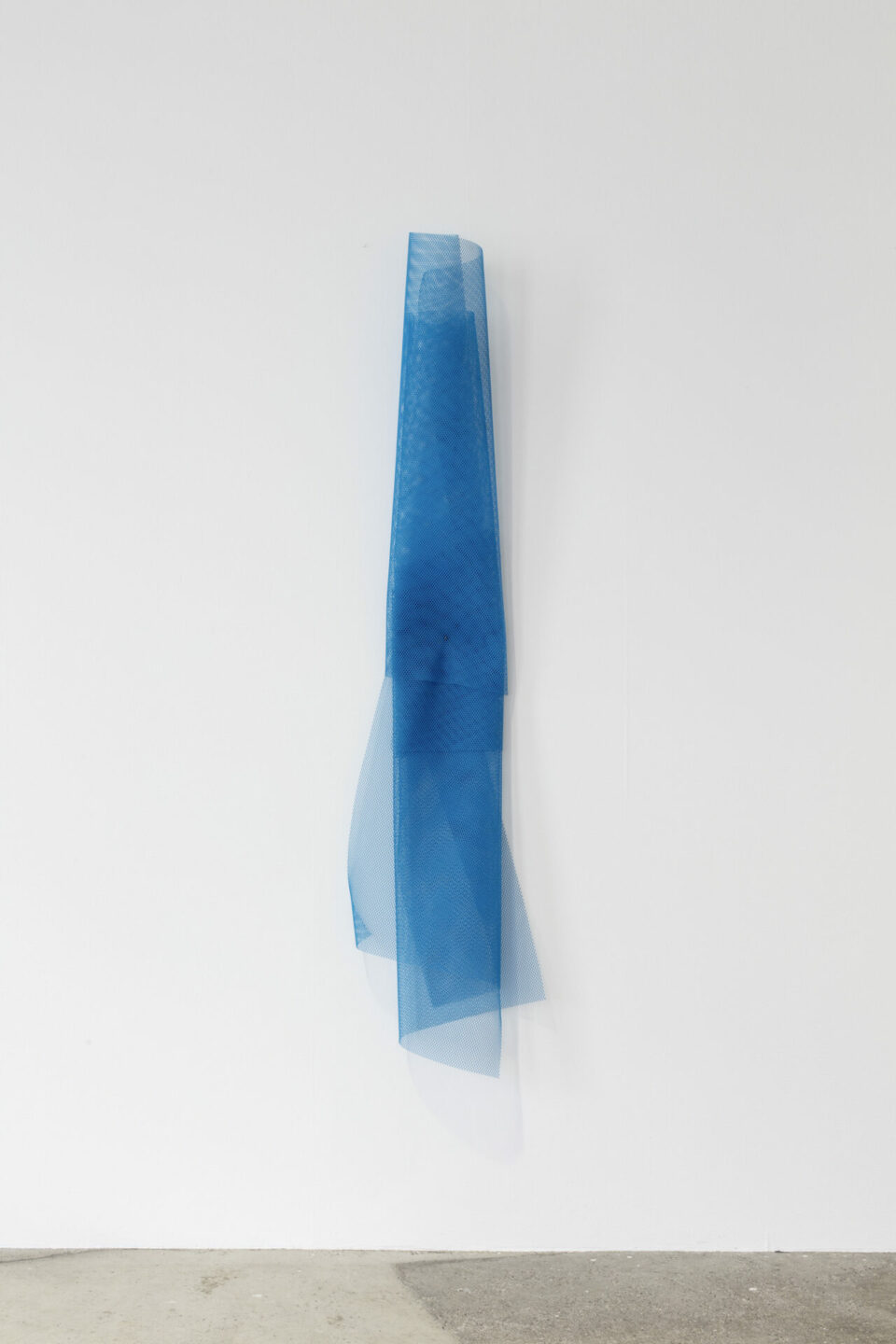
Birgit Werres. "Untitled #41/21", 2021. Plastic. 230x52x30cm. Courtesy of Galerie Anke Schmidt.
How does the more modern trend of recycling materials play into your work? In the beginning of your career, what were the attitudes towards recycling and conservation?
One the one hand, the recycling process causes the materials that are interesting to me to disappear. They are usually no longer visible since leftovers from the production process are generally already recycled at the factory itself.
On the other hand, the constant further development creates completely new recycled products that are also interesting for me in their texture or colorfulness. These processes were just beginning to develop in the early 1990s.
What is it about production facilities like warehouses and factories that attracts you?
Material discoveries and the insight into the production and work processes.
Are there any overarching lessons or themes that you hope viewers take from your work?
Lessons, no. It can change the way you look at things.
Chris Erik Thomas is the Digital Editor of Art Düsseldorf. They work as a freelance writer and editor in Berlin and focus primarily on culture, art, and media. Their work can also be seen in Highsnobiety, The Face Magazine, and other publications.